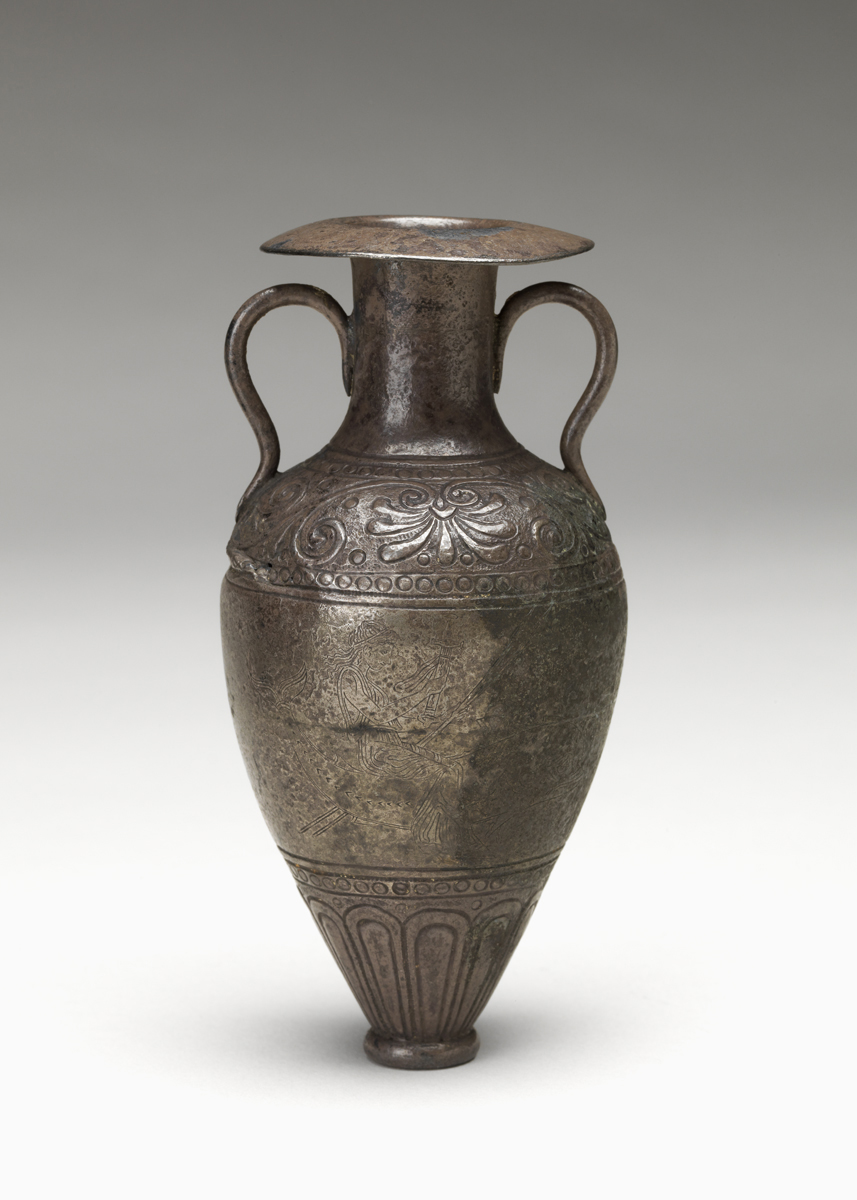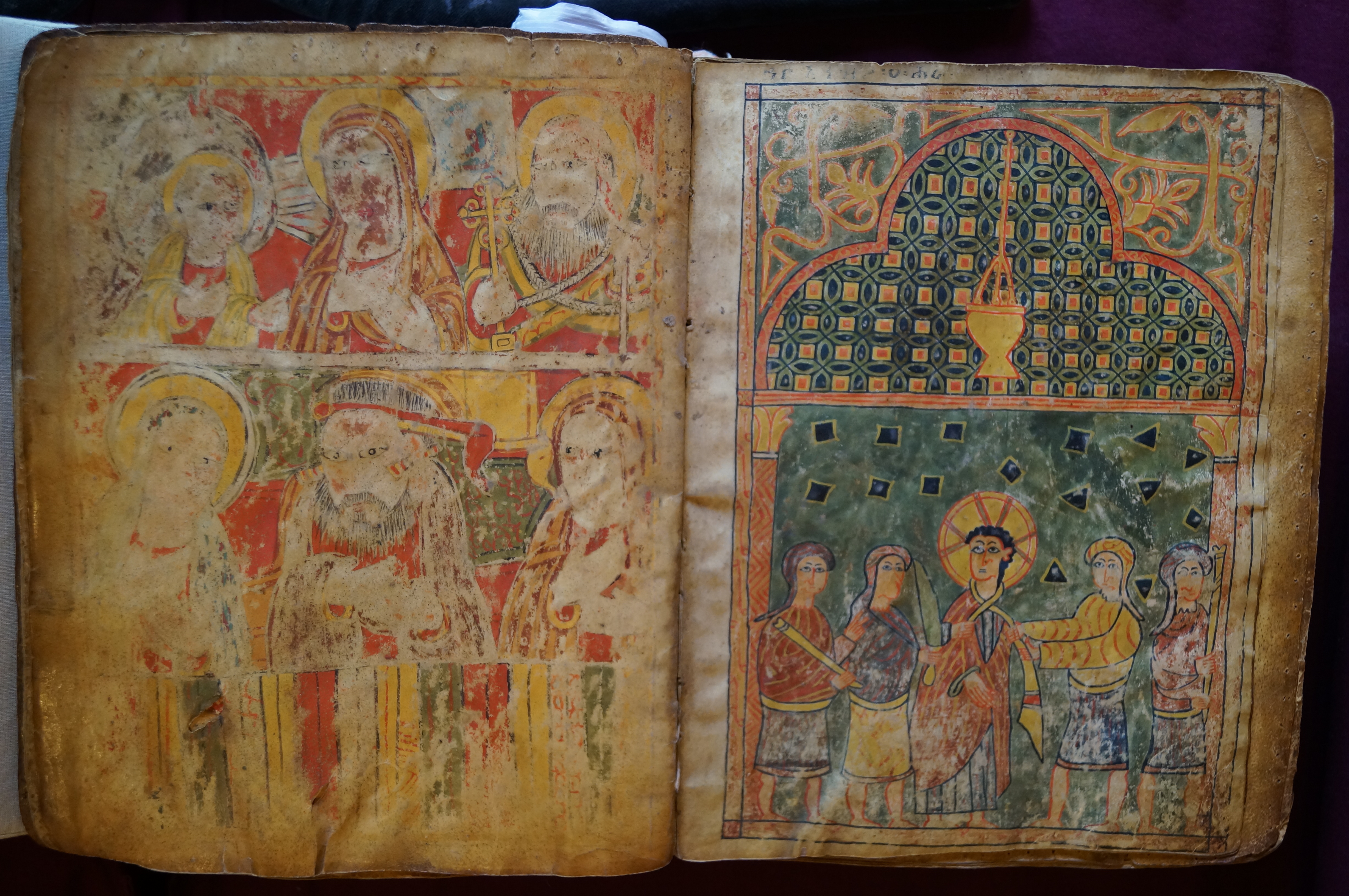ICP Internship Updates, Round 1: Resurrection, Nymphs, and Miracles
This summer, 7 students from the Institute for Curatorial Practice are completing internships with Five College museums and faculty. A little more than half way done, interns Naomi Romm, Kelly Platt, and Amanda Bolin give updates on their research and digital projects.
The Mt. Holyoke Art Museum is celebrating its 140th anniversary by reinstalling the permanent collection along with the museum’s newest acquisitions. Through my internship with the museum, I am responsible for writing thematic guides that will be independently accessible for visitors through a mobile-friendly WordPress site. Thus, visitors will be able to walk around the space with cell phone in hand, and be guided through galleries, pairing objects from antiquities with contemporary works based on individual themes that run through the exhibition. As the galleries are very much divided and categorized by region and time period, the guides must communicate a theme that applies to everything from Pueblo pottery, to French-British-American art of the 1800s, and contemporary and modern works by artists such as Kara Walker, Dorothea Tanning, and Chuck Close.
On my first day, museum staff gave me a binder with thumbnails and descriptions of every object that is going into the space (including some that will not end up actually being installed in the exhibition), and asked me to familiarize myself with the pieces. From there I was to choose themes that could act as possible guides. I was also responsible for familiarizing myself with the museum system, including how to work the internal database, and to research objects based upon their acquisition number and maker.
I am now focusing on two (maybe three) primary guides. I narrowed down from a list that I made of over 20 possible themes. Presently I am reading, researching, and writing about both the topics of the guides as well as the individual objects and makers. Each guide consists of an introduction and 5-6 works, each with their appropriate text that discusses the works and their significance within the theme. As of now my themes are “In the Details” and “Love, Death, and Resurrection”.
Naomi Romm, Mount Holyoke College Art Museum
Hampshire College 12F
During my internship with the Mead Art Museum at Amherst College, I’ve been focusing on an ancient Greek perfume vase, called an amphoriskos. This silver work shows two Nereids (sea-nymphs) carrying arms to the Greek hero Achilles, who is not shown on the vessel. After some searching, Head of Education and Andrew W. Mellon Curator of Academic Programs Pamela Russell and I have decided this amphoriskos comes from near the Black Sea, likely around modern-day Kerch, and was made around 400 BCE. Upon placing the object, I began to think of how to exhibit it digitally. The Mead is planning an exhibition around the amphoriskos in 2018, but I want to experiment with non-traditional spaces. Because this object is both functional and artistic, it could belong in two contexts. I thought then that it would be appropriate to place it in a gynaeceum, the women’s room in the ancient Greek household, and in a cave, significant to nymph worship in ancient Greece as this would have been their dwelling place. Homer, Hesiod, and other poets give the details of these nymphs’ caves. Humans then began to worship nymphs and other rustic deities in these caves. Offerings most often included flowers, wooden bowls, and simple pottery, but a silver vessel would not be unheard of. These caves also included the likenesses of many nymphs, which I plan to include in my own virtual cave.

Unknown maker, Amphoriskos, ca. 400 BCE. Silver, 4 3/4 in x 2 1/2 in x 2 1/2 in. Mead Art Museum at Amherst College. AC 1958.125.a
I would like for the exhibition to focus primarily on the tension in nymphs sexuality and chastity as well as the interplay between myth and real life with regard to societal expectations of women. One of the Nereids on the amphoriskos curiously has a breast exposed though this is quite a serious scene. Other representations and myths focus on the sexual nature of these nymphs, but very often nymphs are expected not to act outwardly sexual. Men created this paradox in the creation of these myths, so this must show some of their anxieties surrounding women’s sexuality. This could explain the societal expectation of a distinctly feminine space separate from the rest of the household, the gynaeceum. By looking at objects that populated the gynaeceum as well as representations of water nymphs from ancient Greek art to contemporary art, we should be able to see an interplay between females in myth and real life.
Kelly Platt, Mead Art Museum at Amherst College
Skidmore College ’18
Research. Research. Research. At this point, I have so many scribbled notes and post-its tucked away, it is a wonder I can still find them all. My work has taken me beyond the shelter of the five-college system and out into the world of academia. This week, I visited the Yale library for further information on the enigmatic object that I am researching.

Six illustrated folios from an ancient Gospel book depicting scenes from the life of Christ, bound later with a Miracles of Mary manuscript. Right: “The Arrest of Christ.” Late 14th century-early 15th century. From the collection of Bob McCarthy.
Made in the 14th-15th century during the reign of Za’ra Ya`qob, the Ethiopian manuscript is certainly a work of art. It is compiled of two distinct manuscripts: one is based upon the Life of Christ and the other reveals images of the Miracles of Mary. The imagery is unique to Ethiopia as it contains motifs taken from across the Middle East and the Mediterranean. Its unique date range also reveals artistic conventions without European influence, as the Portuguese did not enter Ethiopia in force until the mid 15th century. After this date, more traditional European artistic models entered the cultural mode. As it is, the manuscript reveals Proto-Byzantine styles, Palestinian models, as well as apocryphal imagery specific to the Ethiopian locale.
It is a fascinating object of study, especially as Christian African art of this period is often ignored on the timeline of classical art history. The Bob McCarthy manuscript is a valuable piece of Ethiopian lineage that reveals the complexity and advancement of artistic conventions within the country during the 14th and 15th centuries.
Amanda Bolin, Mortimer Rare Book Room, Smith College
Smith College ’18
This post is part of a series of essays, opinions, and reviews written by students, faculty, and staff of the Institute for Curatorial Practice.
